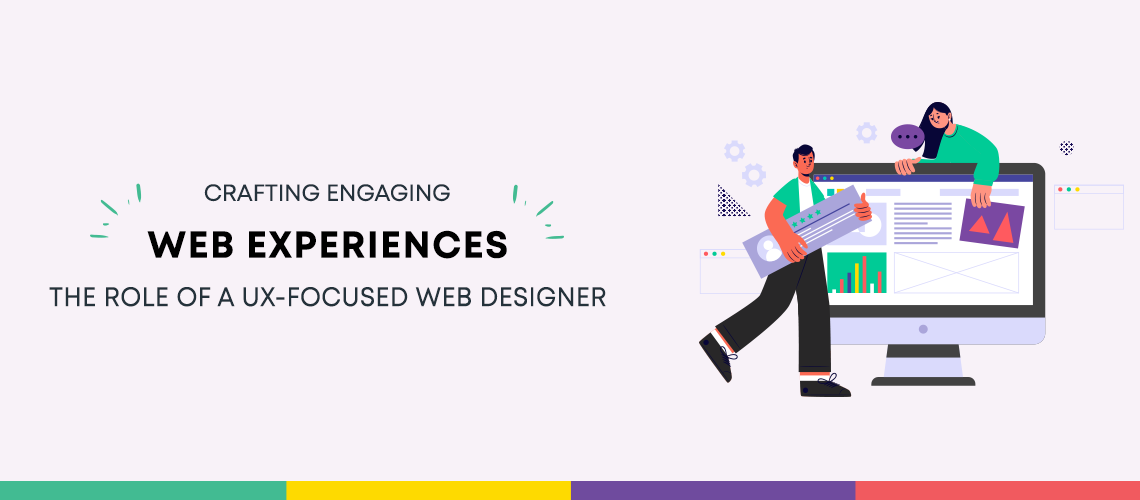Introduction:
In today’s digital age, a successful website goes beyond visual appeal—it must provide an exceptional user experience (UX) to captivate visitors and achieve business goals. This is where a Web Designer with a UX focus plays a crucial role. By blending design principles with user-centric thinking, they craft engaging web experiences that leave a lasting impression.
In this article, we will explore the key responsibilities, skills, and best practices of a Web Designer with a UX focus, shedding light on the importance of their role in the modern web development landscape.
1. Unveiling the Essence of UX-focused Web Design:
- Defining UX-focused web design and its significance in the digital landscape: Explore the fundamental concept of UX-focused web design, emphasizing how it goes beyond mere visuals to encompass user interactions, accessibility, and overall user satisfaction.
- How a Web Designer with a UX focus aims to delight users and drive desired outcomes: Highlight the designer’s role in creating positive emotions, building trust, and facilitating seamless interactions that lead to user engagement, conversions, and brand loyalty.
- The impact of a well-executed UX strategy on user satisfaction, brand perception, and business success: Discuss real-world examples and statistics that demonstrate the tangible benefits of prioritizing UX in web design.
2. Embracing User Research and Empathy:
- The pivotal role of user research in uncovering user needs, motivations, and pain points: Explain the importance of conducting user research to gain deep insights into target audiences, their goals, and their pain points, enabling designers to tailor experiences accordingly.
- Techniques employed by Web Designers with UX focus to gather qualitative and quantitative data: Outline various user research methods such as surveys, interviews, usability testing, and analytics analysis, providing practical examples of how these methods inform design decisions.
- Empathy-driven design: Putting oneself in the shoes of users to create meaningful and intuitive experiences: Discuss the concept of empathy-driven design, showcasing how designers empathize with users to create user-centered designs that resonate with their needs and emotions.
3. Design Thinking: From Insights to Solutions:
- Applying the principles of design thinking in the web design process: Explain the iterative and human-centric approach of design thinking, comprising stages such as empathize, define, ideate, prototype, and test, and how it fosters innovative and user-centric design solutions.
- Ideation techniques used by Web Designers with UX focus to generate creative design solutions: Highlight brainstorming, sketching, mood boards, and collaborative workshops as methods to generate and refine design concepts that align with user needs and project goals.
- Iterative prototyping and user testing to refine designs and validate assumptions: Describe the importance of rapid prototyping and usability testing at different stages of the design process, enabling designers to gather user feedback, iterate on designs, and ensure optimal user experiences.
4. Collaborating with Stakeholders and Developers:
- Nurturing effective collaboration between Web Designers with UX focus, stakeholders, and developers: Discuss the need for strong communication and collaboration skills to align design goals with business objectives, technical constraints, and project timelines.
- The role of clear communication in translating design decisions and rationale to stakeholders and developers: Emphasize the significance of effective communication in articulating design choices, justifying UX decisions, and ensuring a shared understanding among all project stakeholders.
6. Keeping Up with Evolving UX Trends:
- Exploring the ever-changing landscape of UX design trends and technologies: Highlight the dynamic nature of UX design and the need for designers to stay updated with the latest trends, emerging technologies, and user expectations.
- HowWeb Designers with UX focus stay updated and adapt their skills accordingly: Provide insights into how designers can engage in continuous learning, attend industry conferences, participate in online communities, and explore new tools and techniques to stay at the forefront of UX design.
Conclusion:
A Web Designer with a UX focus plays a vital role in creating web experiences that not only look visually stunning but also provide seamless and intuitive interactions. By considering the needs and expectations of users throughout the design process, these professionals contribute to the success of websites, driving engagement, satisfaction, and ultimately, business growth.
As the digital landscape continues to evolve, the demand for skilled Web Designers with UX focus will only increase, making their expertise invaluable in today’s competitive online world.
